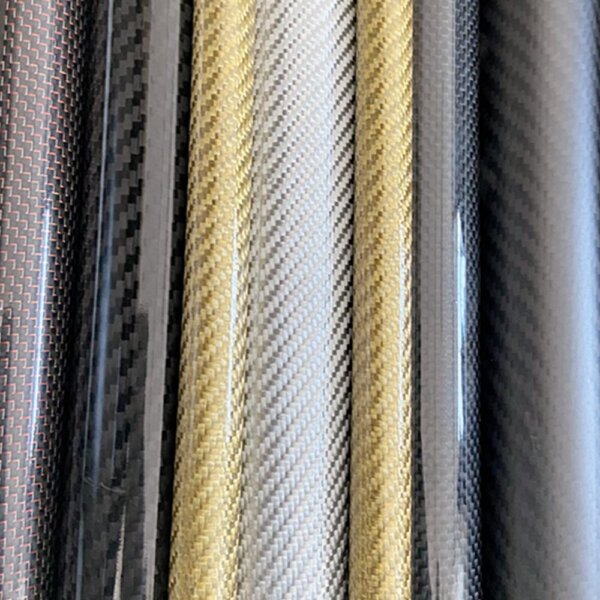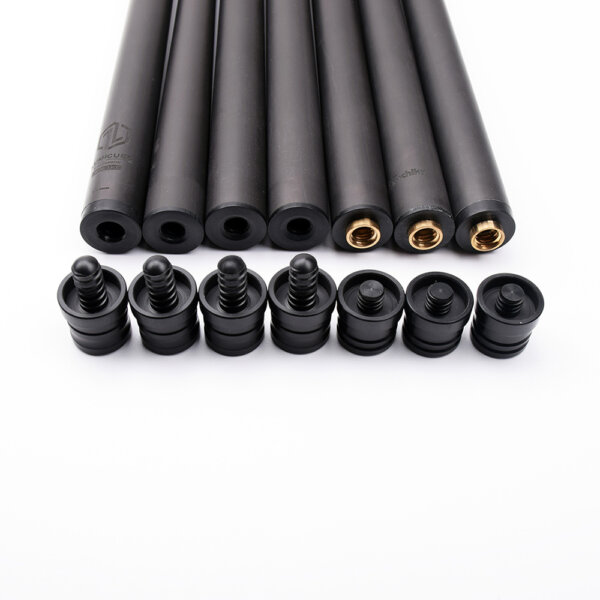
How Much Are Carbon Fiber Hoods? (What You’re Really Paying For)
I still remember the moment I first touched a genuine carbon fiber hood. Running my fingers across that sleek weave, the light catching it in a way metal could never replicate — it felt almost magical. That sense of awe is what draws many of us into this world. But as you lean in, you realize: behind the beauty lies a matrix of costs, risks, and decisions.
In this post I want to take you beyond the obvious “price tags.” I’ll share stories, the hidden numbers, tradeoffs people gloss over, and how tú can make sense of it all — drawing on experience from a specialist fabricante de compuestos de carbono.
The Emotional Equation: Why We Even Ask “How Much?”
Before dollars or pounds, there’s a question: why do you want a carbon fiber hood?
- Is it for performance — shaving weight to improve response and handling?
- Is it for aesthetics — that weave under gloss, the exotic “look”?
- Is it for ego, pride, or the itch that some part of you says “this car deserves more”?
Your motivation influences what price is “too much” — if it’s performance-driven, you may accept structural trade-offs; if it’s show-driven, you’ll demand perfection in finish. For many builders who work with a fábrica de composites a medida, the decision is a balance of measurable gains and the art of presentation.
So when I say “how much,” it’s not just money — it’s how deeply you value form vs function, visible perfection vs hidden strength. If you’re exploring full-vehicle projects, browse real-world examples of coches de fibra de carbono to see how a hood choice harmonizes with other panels and aero pieces.
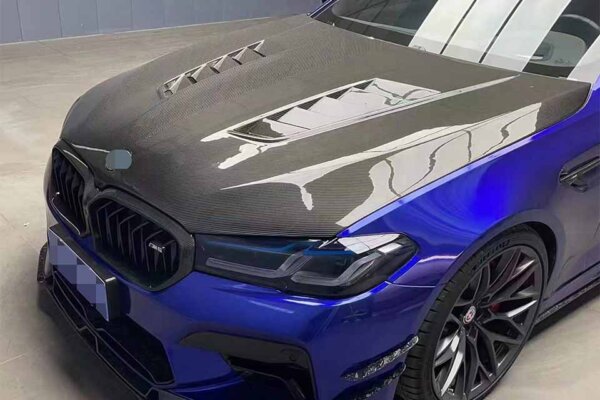
What Determines the Real Cost (Beyond the Obvious)
Let’s walk through what shapes the price of a carbon fiber hood. These aren’t bullet points you’ll see on competitor blogs — they’re mind-connectors, the hidden seams.
1. Material Story & Resin Choice
Two hoods might look identical, but inside is a world of difference. The resin system you choose can make or break performance, UV stability, flexibility, and failure mode. Superior prepreg materials (woven fabrics pre-impregnated with resin) cost much more, but give cleaner void control and better fiber-to-resin bonding.
If a budget hood uses cheap resin, you risk delamination or blistering down the line — something you’ll avoid when specifying higher-grade layups through a proven fibra de carbono personalizada program.
2. Manufacturing Technique & Labour Intensity
Auto-quality composite fabrication is brutal. Every layup, every peel ply, every vacuum bag pass is labor. A simple hood shape may still take dozens of hours of careful hand work, trimming, sanding, inspection.
The difference between a $800 hood and a $3,000 hood often lies not in the raw material, but in how much human time and precision is poured into it — the kind of process discipline you’d expect from an experienced fábrica de composites a medida.
3. Fit, Tolerances & Mould Fidelity
A perfect mould — one that minimizes warps, tolerances, sag — is expensive to engineer. Then reproducing a copy consistently across multiple units requires effort. That’s why for many mass-produced hoods, there son tolerances and you’ll need to adjust.
Even a premium UK shop warns: “a 6 mm warp is impossible to see until you test-fit the bonnet” at the car.
4. Finishing, Clear Coat, UV Blockers
It’s not just the carbon — it’s the layer that protects it. Clear coats must be uniform, bubble-free, properly cured. Many cheaper hoods skimp on UV stabilizers, meaning yellowing or crazing can happen over time.
Think: your hood is only as good as the last micrometre of clear covering it. If you want the weave to stay deep and glassy, specify UV-stable finishes through a fabricante de compuestos de carbono that stands behind its clear-coat system.
5. Shipping, Crating & Risk Buffer
A carbon hood is delicate, big, expensive to ship. Bad crates, careless handling, temperature or humidity swings — all can cause micro-cracks or warping. Many vendors build in “damage buffer costs” into their pricing (i.e. extra margin to cover returns).
UK suppliers sometimes absorb domestic delivery but charge for long-distance or crate shipments. Working with a regional fábrica de composites a medida can reduce shipping risks and costs.
6. Brand, Warranty & Testing
When a maker offers warranty, crash-standards, testing, QA, that confidence is priced in. You’re paying for “peace of mind,” not just a product.
And sometimes you pay extra for the nombre. That doesn’t always guarantee higher quality — but it often ensures better support, documentation, or replacements. If in doubt, review prior builds of coches de fibra de carbono to see how parts age in the real world.
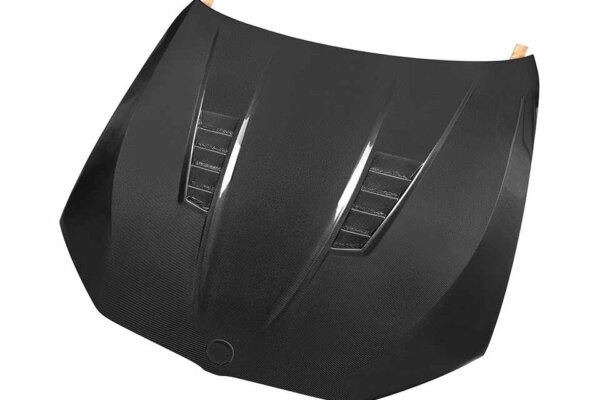
What Prices You’ll See (UK & Global Examples to Anchor Reality)
Here are real data points, with commentary:
| Ejemplo | Price / Currency | Notes & What It Reflects |
|---|---|---|
| Seibon TS-style hood for 2022–25 GR86 / BRZ | £1,439 (ex VAT) | Show-ready finish, venting, reuse of OEM hardware |
| CMST for BMW M3/M4 F80/F82/F83 | ~ £1,000 | Gloss woven finish, UV protection, “standard” level hood |
| UK-made bonnet via ALG Performance | from £849 | Vacuum infusion, clear coat, export crate option |
| CT Carbon hood for McLaren 720S | £2,999 | Premium pre-preg parts for exotic car, includes warranty |
| CarbonFiberDynamics bonnets | £1,500 – £2,800+ depending on model/tax | Highly curated list of expensive hoods, high end |
These anchor the ranges: ~£800–3,000+ for serious aftermarket carbon hoods in the UK / EU.
Also note: many cheap listings on eBay or overseas (e.g. £500–£1,200) tend to be lower in finish or weaker in structure. If you’re comparing options, ask your fabricante de compuestos de carbono for material and layup transparency to avoid false economies.
The Hidden “Cost Accelerators” Nobody Highlights Enough
Even after you pay for the hood, these factors can throttle your budget if you aren’t prepared.
A. Fitment & Adjustments
You’ll often need to tweak hinges, tabs, latches, rubber stops. Sometimes even shim or “tweak” body panels for perfect alignment. That may be hours of shop work — which a seasoned fábrica de composites a medida can help minimize with better mould control and QC.
B. Heat & Underside Reinforcement
If your engine bay gets hot, the underside of the hood may flex, delaminate, or degrade unless reinforced or protected (e.g. heat blankets, thermal tape). This cost is often omitted. On heat-intensive builds, we often design hood venting to match the airflow strategy used across full coches de fibra de carbono.
C. Accessories & Integration
Things like washer nozzles, insulation pads, hood dampers, vents — adding any of these requires careful modifications (drilling carefully, ensuring seal, not splitting the clear coat). For bespoke placements, a fibra de carbono personalizada approach lets you pre-plan mounts and reinforcements.
D. Repair & Risk Margin
Carbon seldom “bends back” like steel. If you crash, even slightly, repair may be expensive or impossible. Many builders budget for replacements or buffer “failures.”
E. Long-Term Degradation, Maintenance
Over years, UV, moisture, minor stresses, and small chips accumulate. The finish may cloud. You’ll need to maintain protective coatings, re-polish, possibly reapply clear layers.
Jimbo’s Detailing emphasizes that the wrong wash method or detergent can destroy your clear coat or dull the weave.
What It Se siente Like (Anecdotes & Mindset)
Here’s something I’ve seen in real builds (heard in forums, shop benches) that you don’t always read in spec sheets:
- A builder buys a “carbon hood” for £900, receives it and finds edge chips, slight warps, and misaligned latch points. He ends up spending £300+ more to “make it perfect.”
- Another guy picks a £2,500 hood, but when he ships it overseas, crate costs and import fees amount to £400 extra.
- Someone once asked: why is the hood underside plastic? On Reddit, users flagged that as a red flag — often underside plastic or FRP backing is used to cut cost.
- In another case, a classic car’s owner fitted a modern carbon hood, but because he didn’t account for thermal expansion, on a hot day the hood rubbed the windscreen.
These stories matter — they’re the real costs beyond “sticker price.” You can use them as negotiation points or decision filters. If you prefer a zero-surprise path, partner directly with a fabricante de compuestos de carbono for spec clarity and build consistency.
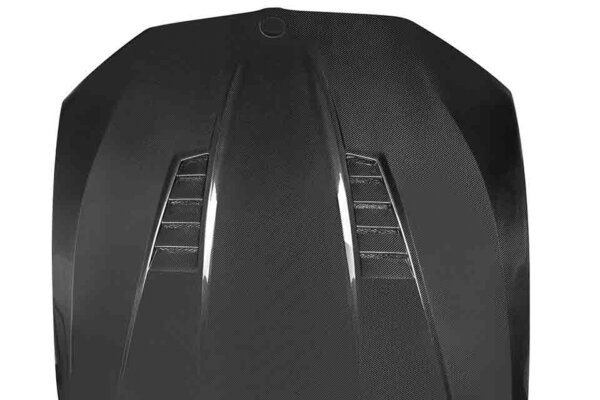
Cómo Tú Should Think About “Is This Price Worth It?”
I want you to walk away not just knowing numbers, but having mental tools to evaluate deals.
1. Ask for raw material breakdowns & finishing specs
If a seller can’t tell you how many layers, resin brand, UV additive, curing method — be cautious.
2. Require close-up weave & void photos
Voids, resin accumulation, uneven weave are common shortcuts. Ask for macro shots, edges, underside.
3. View contours, warps & test-fit tolerances
Don’t accept flat tolerances; measure how much “make it fit” is baked in. Those 3-6 mm warps are not rare.
4. Consider local or custom shops
Sometimes a UK-carbon shop, though slightly more expensive initially, saves you in shipping, risks, customs, and adjustment time — especially when it’s a true fábrica de composites a medida.
5. Build in a 20–30 % contingency
Whatever your hood budget, multiply by 1.2 or 1.3. It covers finishing, fit tweaks, hidden problems.
6. Decide your acceptable failure modes
If a chip or scratch would make you panic, you need a build quality that can resist that. If you accept patina, you can accept some imperfections.
My “Ideal Budget” Estimate (for UK / Europe, with Realistic Quality)
If I were doing this for myself in 2025, here’s how I’d budget (with a realistic quality target):
- Carbon hood (mid-premium): ~ £1,100 – £1,800
- Finishing + clear coat polish: ~ £200 – £400
- Fitment, alignment, adjustment: ~ £150 – £300
- Shipping / crate / import buffer: ~ £100 – £300 depending on distance
- Risk / contingency: ~ £150 – £300
So my total “safe-side” budget would be £1,700 – £3,000 depending on car, complexity, and finish level.
If someone offered a perfect hood for £800 “all in,” I’d view it with suspicion — either there’s a hidden catch or they’re accepting compromises.
Final Thoughts — What You’re Truly Investing In
When you buy a carbon fiber hood, you’re not just buying a shell. You’re investing in:
- Precision: every micrometre of weave, warp, tolerance
- Trust: will it last, or crack unpredictably?
- Identity: the sense that your car is elevated
- Risk management: avoiding warps, repairs, shipping issues
So the question “how much” is inseparable from “how well.” If you pursue the cheapest path, you might land on a result that fails you aesthetically or structurally. If you aim for the highest, you pay for peace of mind and excellence — ideally with the guidance of a proven fabricante de compuestos de carbono that can tailor truly fibra de carbono personalizada solutions around your build.

